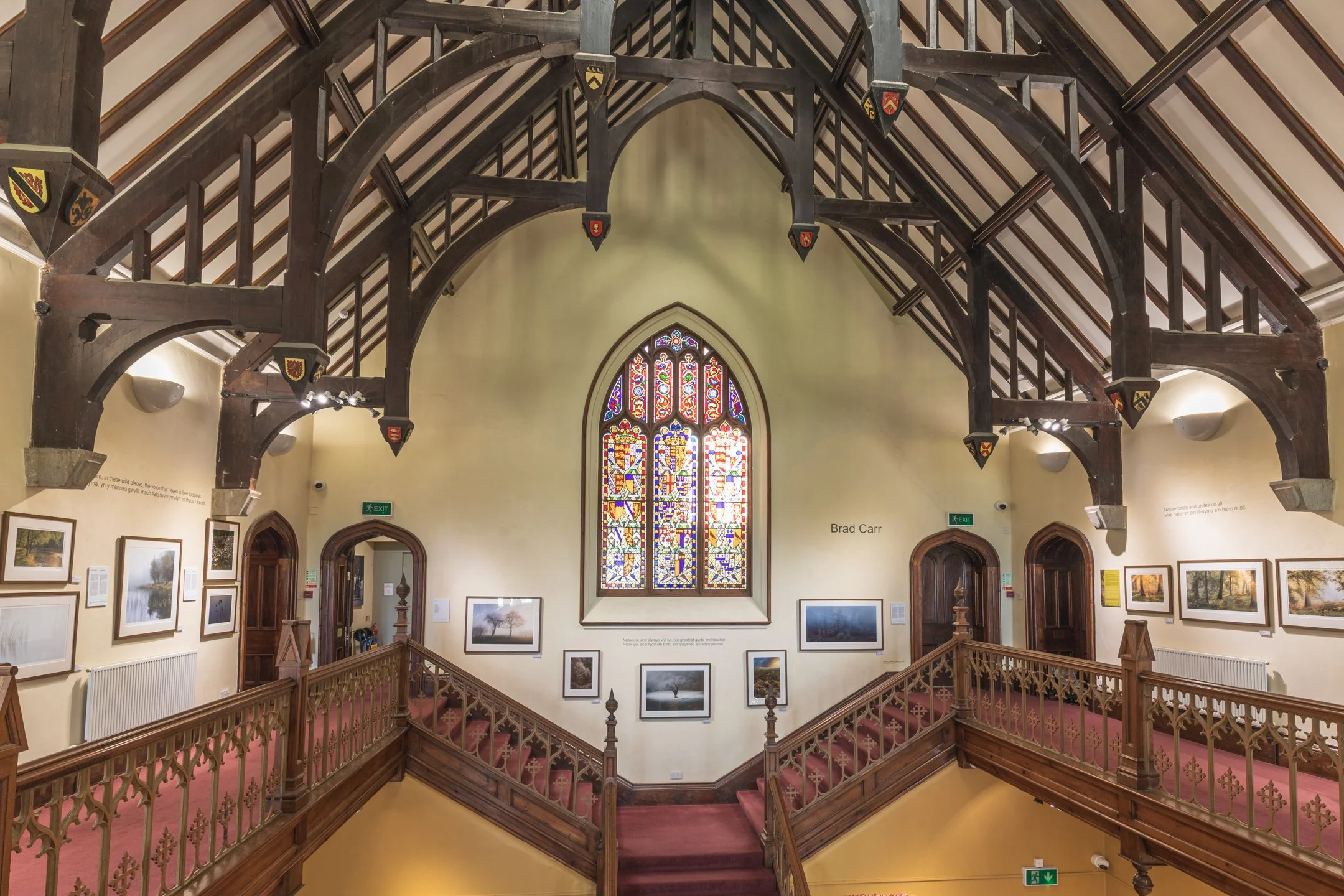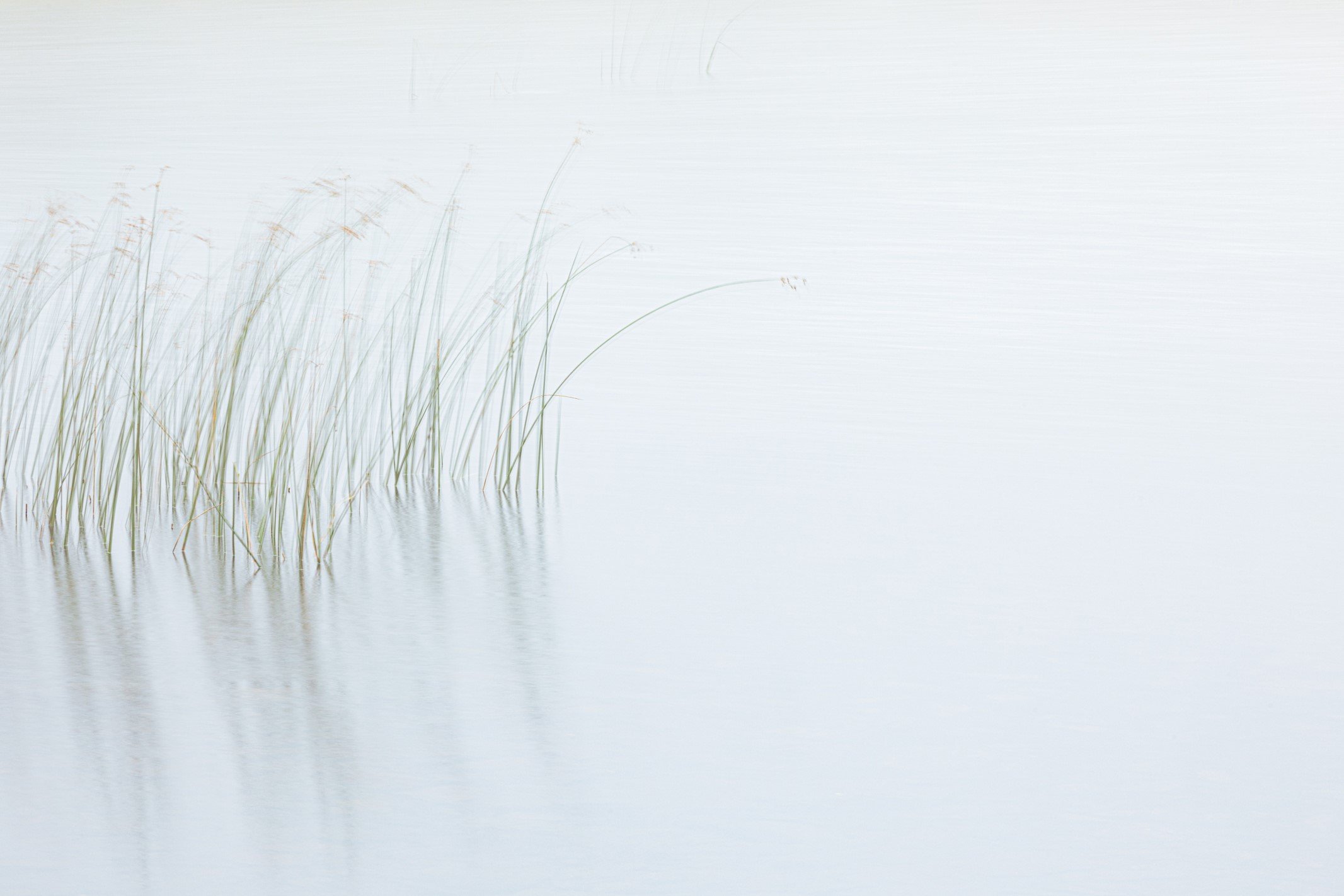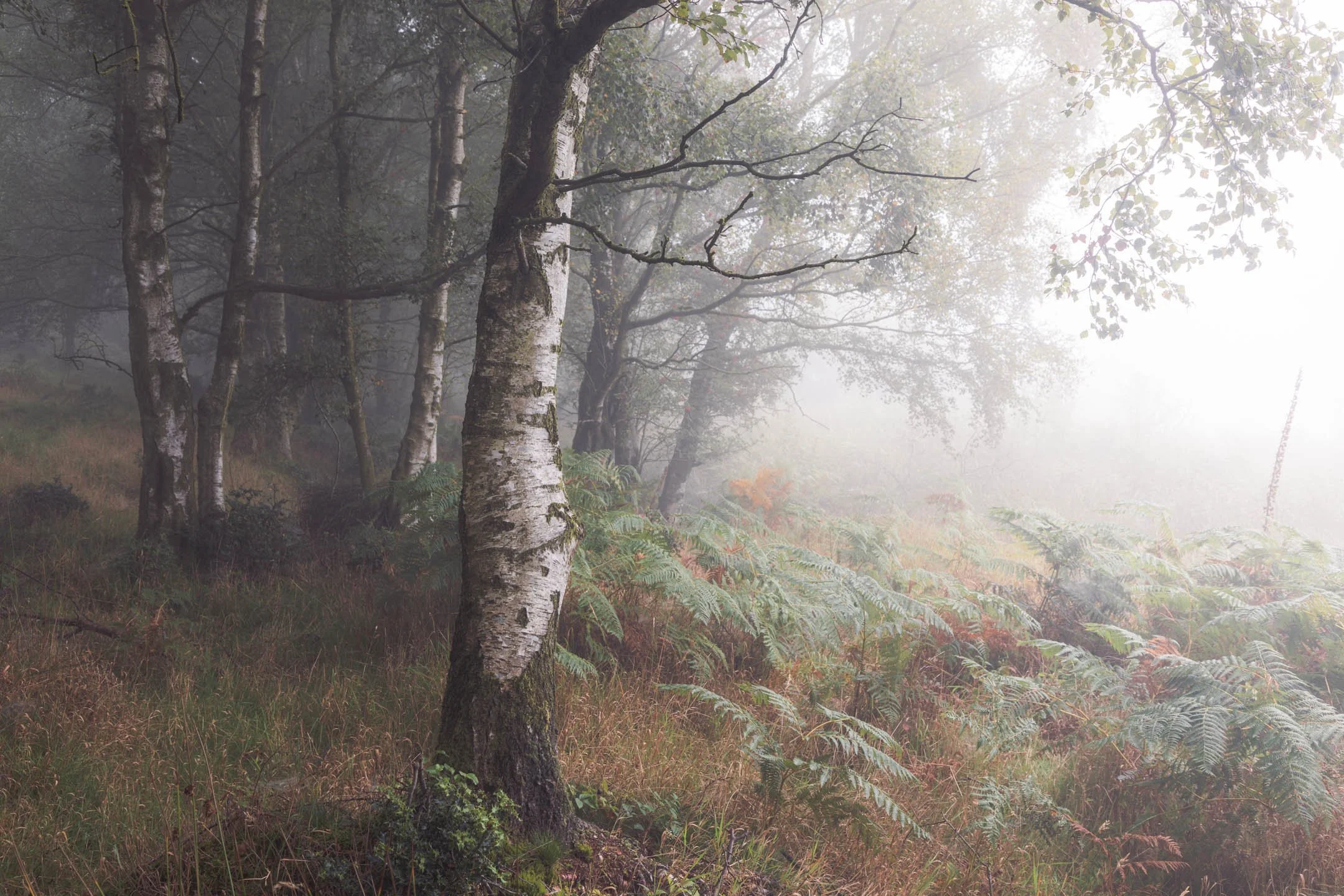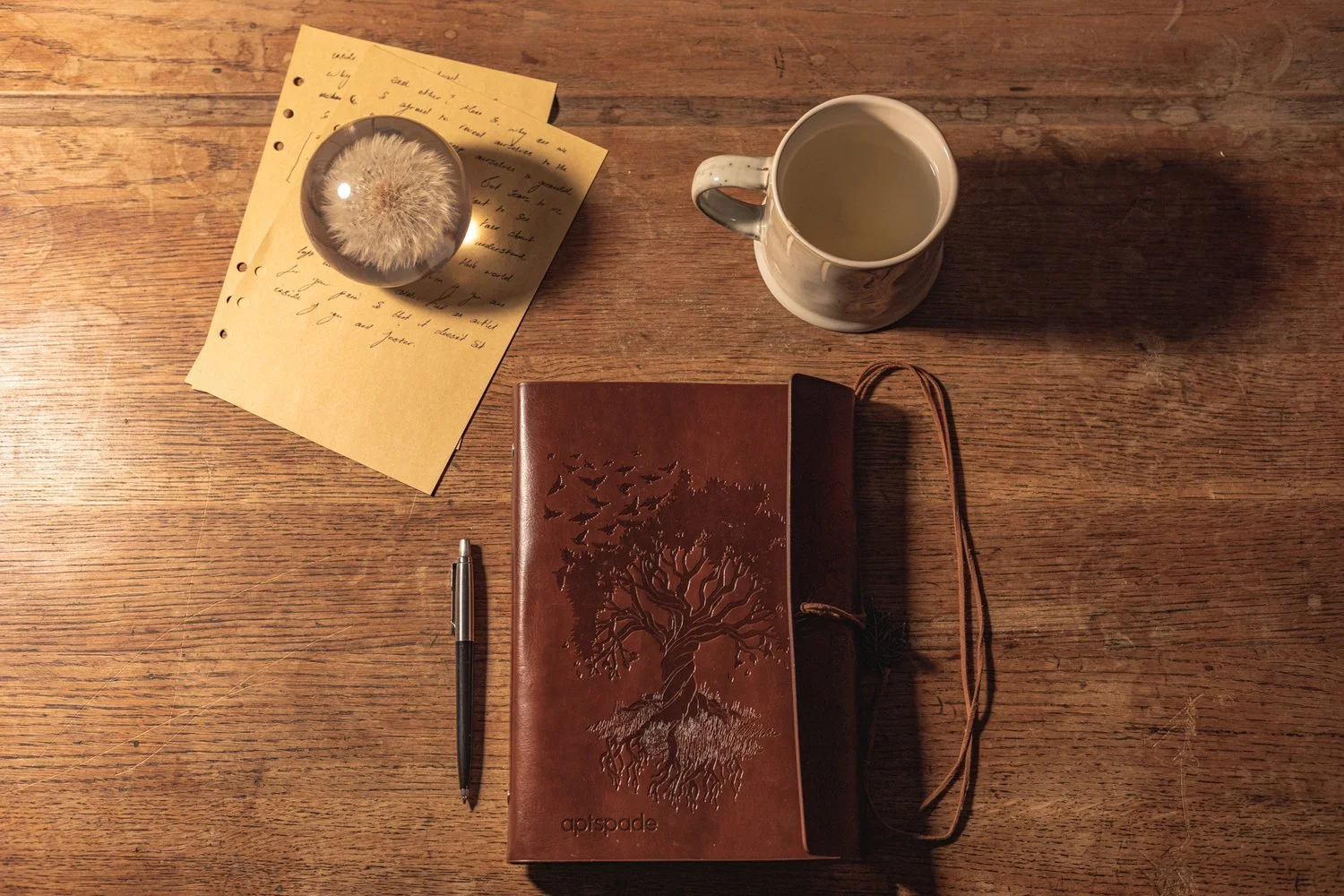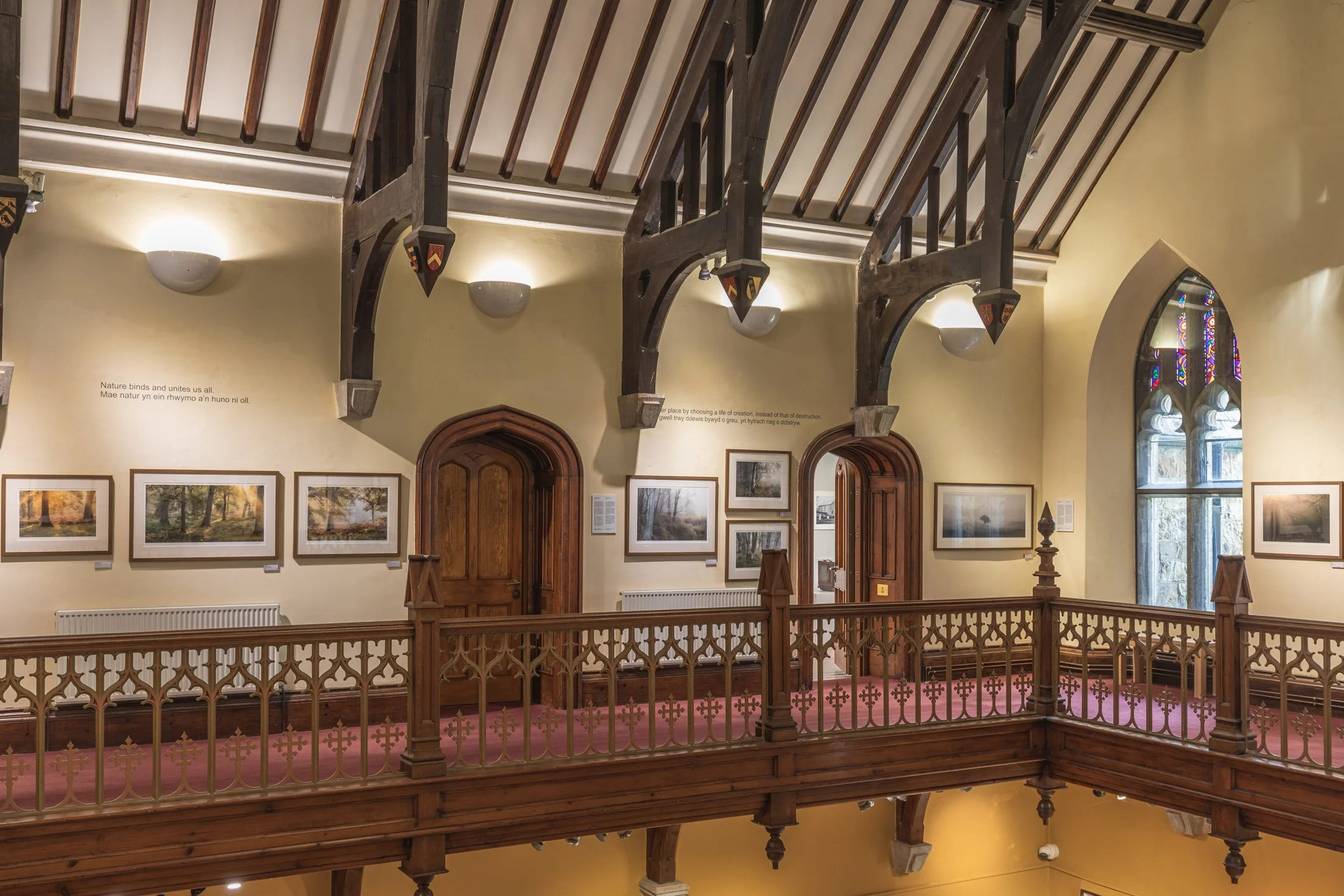How to Land Your First Major Photography Exhibition
Ok, so you have found your passion through the lens of your camera and formed a purpose with your landscape & Nature photography. You’ve built yourself a social media audience and you’re now dreaming of a bright future using your creativity for good. But what’s the next step in your photography journey?
Well, you’re now at the point in your creative journey where you want to get more eyeballs on your photographs to make yourself known in the wider photography world. One of the best ways to raise your profile, away from the digital landscape, is by showcasing your work in the physical world.
Landscape photography, however, is criminally overlooked as an artform, especially here in the UK. But there is no reason why you can't turn the tide and land yourself a solo exhibition in a national gallery, just like I did in May 2025 at the prestigious Plas Glyn y Weddw.
Curators in galleries probably won't be looking to display typical landscape photographs that adhere to all the rules and represent a specific time or place.
Your photographs NEED a voice - YOUR voice. They NEED to communicate something MORE!!
No gallery wants to represent someone who says the same things as everyone else. They want people who are courageous enough to stick their heads above the firing line, telling the TRUTH with their creative works.
Here are some non-technical ways to add more meaning and purpose to your landscape photographs so you can land your first major exhibition in a gallery:
Develop a Strong and Consistent Photography Portfolio
First and foremost, you’re going to want to curate your landscape photography portfolio. It is going to have to showcase only your best work, concisely and consistently. This means ruthlessly culling irrelevant photographs that are long past their ‘use by’ date, ensuring that every photograph contains a deeper story or is an important piece in the jigsaw of your final collection.
Galleries are more likely to feature photographers who have a clear artistic vision and identity, an understanding of who they are, and clarity around what they are communicating. It is important, therefore, to develop your style before pitching our work to the curator of a gallery.
The chances are, if you haven’t found this consistency within your work yet, your work isn’t ready to be displayed in a gallery. It is estimated that 14 billion photographs are shared every day. Now, more than ever, your photographs NEED to be recognisable.
To develop your vision & style, learn what you love to photograph. Then find out WHY you love to photograph it. Use 'stillness' as a daily practice and allow your mind the space it needs to wander into the subconscious realms to retrieve insights that will guide you to a place of deepened self-awareness. Tap into your soul's intuition and find out WHERE it is trying to lead you. Then, understand exactly WHAT it is trying to teach you.
Your greatest gift in this world is YOUR way of seeing. You see in ways that no one else does. They will never be able to see in the same way that you do. Your vision is your superpower. Understand this and you will win. The journey of the photographer is to see what only we can see, and to be what only we can be.
Learn to Communicate & Tell Your Heart’s Truth
One of the most important and so often overlooked skills as a photographer is communication. I often hear of photographers complaining about how they lack writing or speaking skills. It makes sense, given that we choose to use a camera as our primary tool for communicating with the world. Sadly, however, in this digital landscape, great photography is simply not enough.
There are millions of photographs hitting our screens every day. It is arrogant to believe that your work is just going to get spotted by that important someone scouring the Internet on their mobile phone. Most people are scrolling to pass the time, mustering just about enough energy to mindlessly double-tap before moving on to the next post.
Every opportunity I have been ‘given’ so far has been a result of me putting down my mobile phone and going out to get it. I have worked incredibly hard to learn how to effectively communicate with curators, editors, podcast hosts, and business owners.
I understood early on in my career that opportunities weren’t just going to come my way. I learnt humility, surrendered my ego, and began to reach out to people, telling them who I am, what I do, and, more importantly, why I do it. I would advise anyone on their artistic journey to do the same.
Keep your feet on the ground, remain humble, and tell the truth. As a creative person, you can’t go far wrong when you do that.
In this world, there is the truth that rules over all and then there is your heart’s truth. As an artist in any medium, the journey is to get down to the absolute core of who we are and to create work that reveals our heart’s truth.
Humans want to connect with other humans. The most successful people tomorrow will be those who master the art of honest and authentic storytelling to connect with other human beings who are drowning in a world of AI.
Refine Your Creative Voice
In your pursuit to gain greater recognition with your creative work, it is vitally important that you work as hard on your creative voice as you do on your photographic vision. Your creative voice is all about finding and communicating your all-important ‘why’. If you want your work to be hanging on walls in galleries, then it needs to contribute to something bigger than your own egocentric wants, needs, and desires.
Every gallery curator, podcast host, and magazine editor will understand that you love being outdoors in the landscape and how you want to share that love with others. They also likely won’t care too much.
What are you bringing to the world beyond wanting to feel the split-second of elation when the sun momentarily breaks through the clouds?
What does your work stand for?
What causes are you fighting for?
No artist is likely to land an exhibition without articulating what it all means and why they are creating work for the world. COMMUNICATION is KEY in this industry, and those who can effectively share & communicate the ideas they have in their heads are the ones who will win in the long term.
The journey to unearth the creative voice is a long and arduous one. I recommend making friends with your journal. Set aside some time every day, or every other day, to hone your writing skills. Those who communicate well visually, verbally, and through the written word stand the greatest chance of finding artistic and commercial success.
Not only does journaling lead to an increase in emotional intelligence, but it also fosters greater levels of self-understanding and awareness. We add colour to our soul through the introspective process. By journaling, you start to become EXACTLY the type of person a gallery curator is looking for.
Most galleried are going to want to include some form of writing for greater context around the photographs they display, so it is essential that you work hard to refine your writing skills, alongside striving to master the craft of photography. Those who can photograph well and write well become real powerhouses in the creative world and will quickly win the favour of curators and editors of leading magazines for the strength and depth of wisdom they offer.
By refining your creative voice and better understanding your ‘why’ through the process, you will also find that ideas for features spring to mind more frequently. It is important to go to a curator with a refined idea for an exhibition. The clearer the idea you have, the better your chances of your work being displayed.
Be Patient
It will take time to land your first major exhibition. Relationships with curators take time to build. It is a process that cannot be rushed. People need to trust you in this industry, as in any.
You should focus your efforts and energy on one or two galleries and curators at a time, applying a strategy to nurture the relationships necessary to secure your exhibition. Be consistent in posting your work to various places online to raise your profile and ensure that your name gets seen in the ‘right’ places, and then be diligent in your efforts with each of the respective curators. Reach out to them on platforms like LinkedIn, but don’t go straight in with the hard pitch. Just connect, engage, and let them know of your intention to raise your profile with a view to showcasing your work to the public in the future.
Ensure you’re communicating your heart’s truth with authenticity and vulnerability in the places where it matters. If you’re connected with them on LinkedIn, for example, be diligent with your posting efforts. Just because they don’t engage, it doesn’t mean they aren’t aware of you and your work. Be patient, and trust in the process. You’ll be surprised at who is watching and witnessing your unfurling.
Embrace Failure
Sensitivity as an artist is a fantastic trait to have — one of the most important, I would say. Hyper-sensitivity around rejection, however, is a fast-track to working a 9-5 job doing something you hate. I can guarantee you that you will face many times as much failure as you do success as you walk along your creative path. You should get used to it… Quickly! Learn to take pride in each failure. Failures are a badge of honour for those who are courageous enough to try. Collect them. Show them off to the world. The artists who have tasted any level of success along this path are guaranteed to have faced more than a fair share of failure.
For every one response I get from an editor, curator, podcast host, or business owner, there are probably seven or eight responses I didn’t get. People are busy, I get it. I run a business myself, so I know how difficult it is to market myself, write articles, create new photographs, plan workshops, update my accounts, and reply to every comment/ email that I get. Wouldn’t it be arrogant of me to believe that I even deserve a response from everyone, never mind an opportunity, and get angry or upset when I don’t?
In Conclusion
Seeing your work on the walls in a beautiful gallery is an incredible experience — some might even say it’s the pinnacle of a creative career. There is something truly magical about walking around a gallery where countless artists have showcased work for centuries to see your own work hanging there for the public to see. You become a part of history. From my personal experience, it is well worth the blood, sweat and tears required to make it happen.
The process of landing your first solo exhibition is not easy. It will require you to overcome many challenges along the way. I hope that this guide might aid you on your creative path and help you to land that all-important first major exhibition in a gallery, and serve as a springboard for your career as a landscape and Nature photographer.
Are you looking to turn your love of photography into a profession? I offer one-to-one mentoring sessions to help people just like you on your journey to turn pro.

